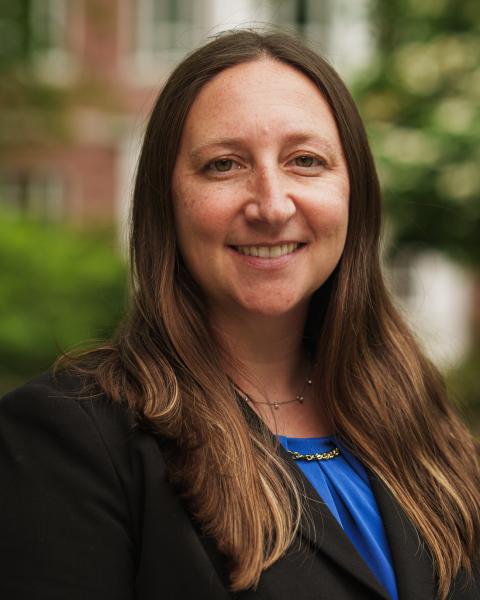Invasives Academy Builds Capacity to Manage Natural Resources Threat
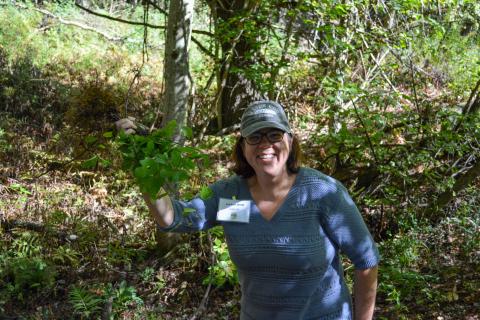
“If you put your hand over a knotweed plant it gets nervous,” joked Tom Lee, UNH associate professor emeritus for natural resources and the environment. “Deep shade excludes many invasive plants. In other words, shade is an ally.”
Lee was speaking to participants from across New Hampshire who gathered at the Enfield Shaker Museum in late September for a two-day workshop to learn about the ecology and management of invasive plants in the Granite State. For the past two years, Extension’s NH Invasives Academy has provided educational presentations and immersive field work for community volunteers, foresters, natural resource professionals, municipal staff, private landowners and other individuals interested in invasive plants.
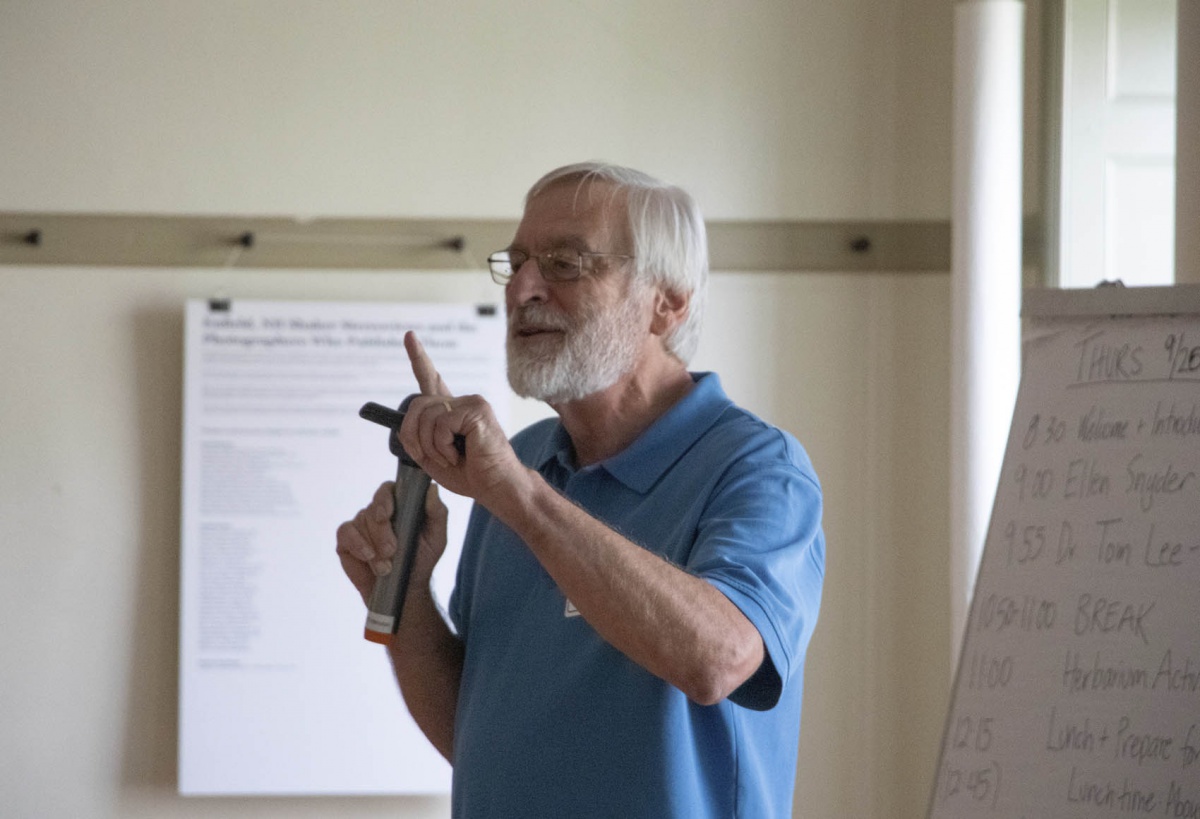
Krystal Costa (UNH class of ’15, environmental conservation in watershed management) serves as the conservation program coordinator for NH Lakes. She eagerly signed up for the workshop because, “the presenters are an all-star line-up—big names—it’s worth carving out time for and it’s very affordable,” she said. “We have a wide reach into the lakes communities. It’s important to stay up-to-date on these issues.”
Why Are Invasives Problematic?
Plants disperse by seeds, fragmentation, rhizomes, wind and animals. There are a lot of hypotheses about why invasives are so successful but the one that stands out most to Lee is that invasives have fewer enemies. “Lack of strong limitation leads to exponential growth,” he said. Invasives do better in landscapes that have been clear-cut or are under construction. With more land being developed as time goes on, it increases the amount of area suitable for invasives. “It doesn’t mean you shouldn’t cut or log; it means you need to think ahead,” he said.
Invasive species reduce biodiversity by outcompeting native plants and animals for resources. They can also degrade water quality, cover nest sites, reduce crop production and cause human health problems.
Identifying Invasives
For Karen Bennett, Extension forestry professor and specialist, getting to know plants is like getting to know people. She led a hands-on activity so that participants could feel, smell and occasionally taste some samples of common invasives found in New Hampshire. Workshop participants gathered together to determine and discuss identifying features of plants like oriental bittersweet, burning bush and multiflora rose.
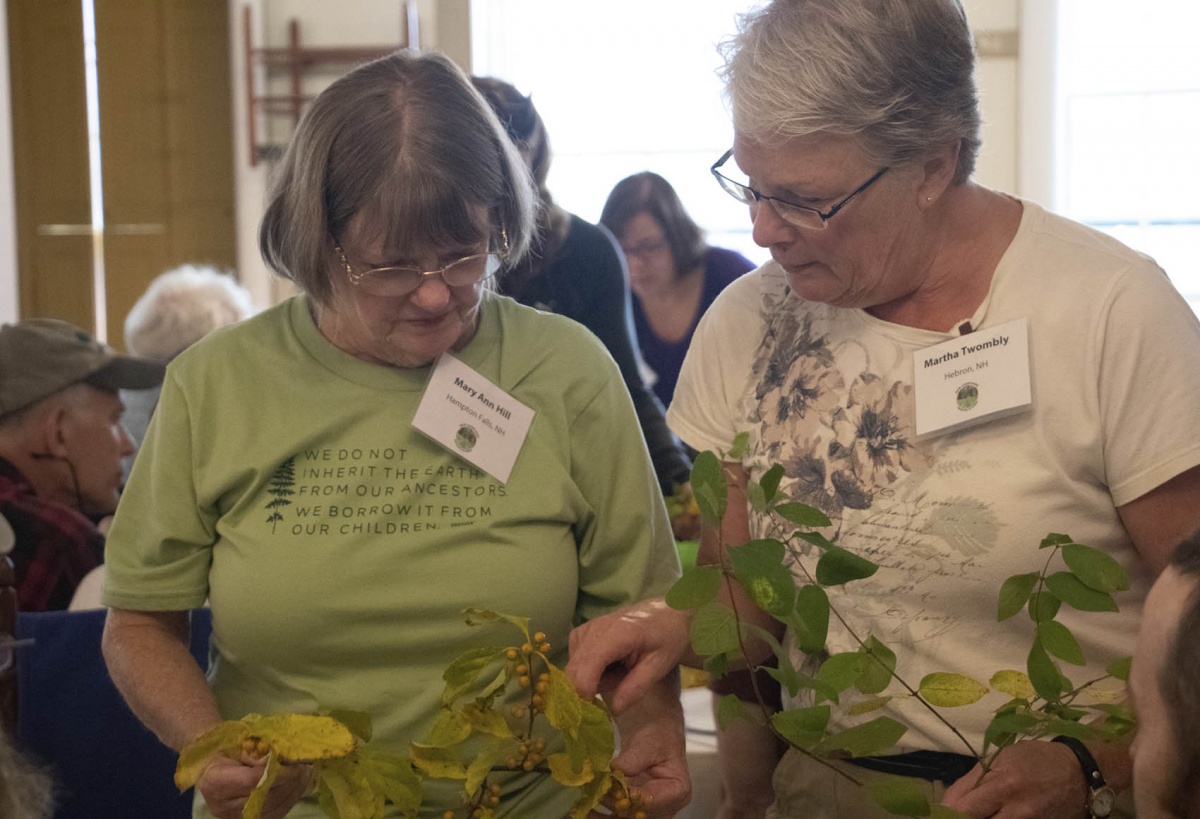
“Sometimes you need to use your imagination,” Bennett said, referring to the somewhat subjective nature of identification. What one person remembers about a plant might differ than the next person. For example, she explained that tree-of-heaven looks like sumac but can be differentiated by their seeds. Tree-of-heaven smells like peanuts, so someone with a strong sense of smell might prefer using that indicator.
“You need to learn the rules to know the exceptions—branch formations, silhouettes, flowers, fruits, seeds,” Bennett said. “Using a dichotomous key—'it’s either this or that’—can be helpful, like opposite or alternate branching. Really get to know your habitat.”
Master gardener Betsy Drinkwater serves as a volunteer at the Enfield Shaker Museum. “I came to the workshop because I help maintain the museum’s herb garden. I spend a lot of time with school groups that visit the museum and I wanted to expand my ability to identify invasives,” she said.
Methods to Manage Invasives
Biological, chemical and mechanical methods can be implemented to manage invasives. Various factors affect which method is appropriate or realistic for any given project such as budget, time and available help. Haley Andreozzi, Extension wildlife outreach program manager, walked participants through some steps that can help yield the most effective results. She explained that it’s important to think through the process before heading out to the woods or backyard.
Andreozzi suggested: creating a plan; identifying goals; understanding what you’re dealing with (i.e. mowing is not an effective management practice for knotweed because it spreads through fragmentation); and mapping where the invasives are. The Early Detection and Distribution Mapping System (EDDMaps) provides a web-based mapping system for documenting invasive species distribution. It combines data from many databases and organizations to create a national network of invasive species distribution data.
Helpful Tips for Removing Invasives by Hand
–Use five-gallon buckets to carry gear and collect seeds
–Be aware of dangers like wasps, ticks, barbed wire, woodchuck holes, poison ivy and dehydration
–If possible, pull when the ground is moist or after it’s rained
–Wear rubber boots
– Compost invasives on site whenever possible
–Work downstream and start at the source because dispersal is affected by flooding
Raising Awareness About Invasives
In exchange for the low cost of this two-day training, participants agreed to return to their New Hampshire communities and contribute 20 hours of their time to share information they learned with landowners, colleagues, clients or other members of their community.
Martha Twombly, co-chair of the Hebron Conservation Commission, and Gary Dickerman, chair of the Claremont Conservation Commission, are among the attendees who express excitement about sharing their newfound knowledge. “I look forward to sharing this information with the commission because it’s something we all need to be concerned about and the response needs to be collaborative,” Dickerman says.
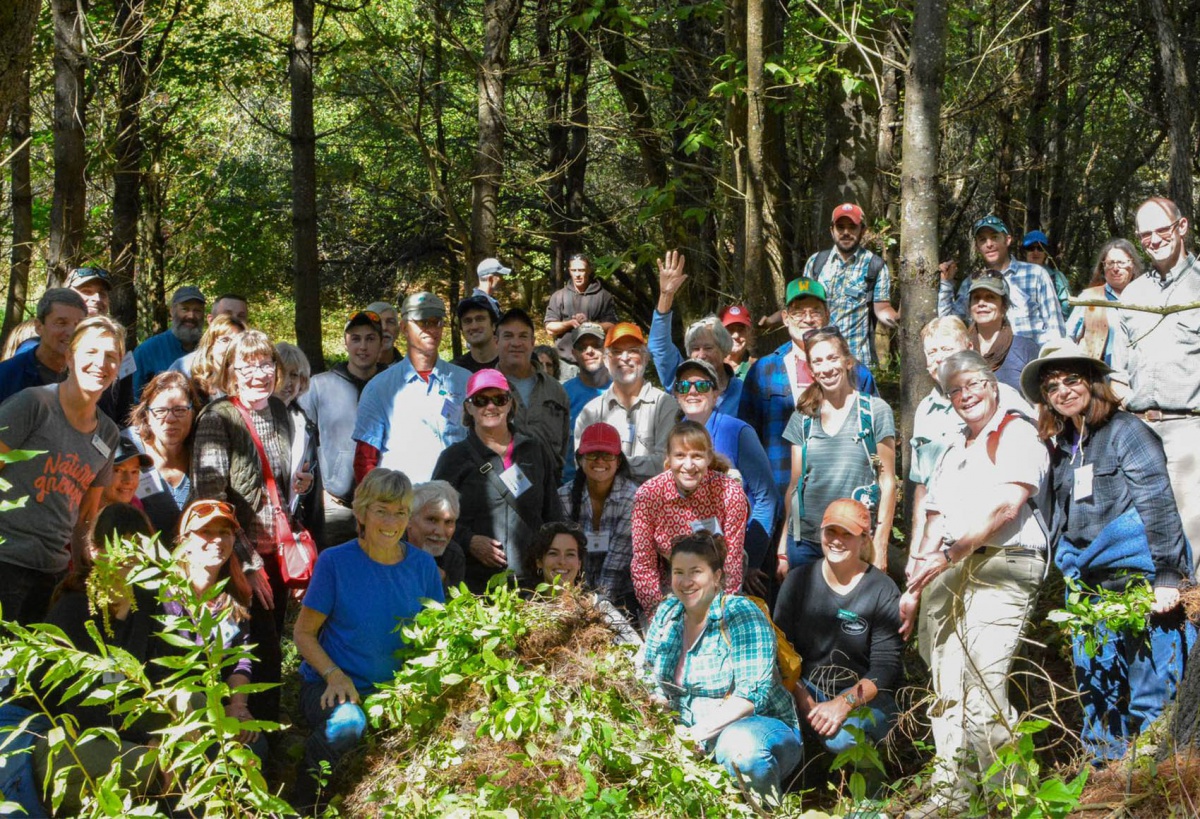
New Hampshire Invasives Academy was underwritten by program sponsors, including UNH Cooperative Extension, the USDA Forest Service, Enfield Shaker Museum and other collaborating organizations. Continuing education credits (CEUs) were available for natural resource professionals, including 15 SAF Category 1 CFE credits.
